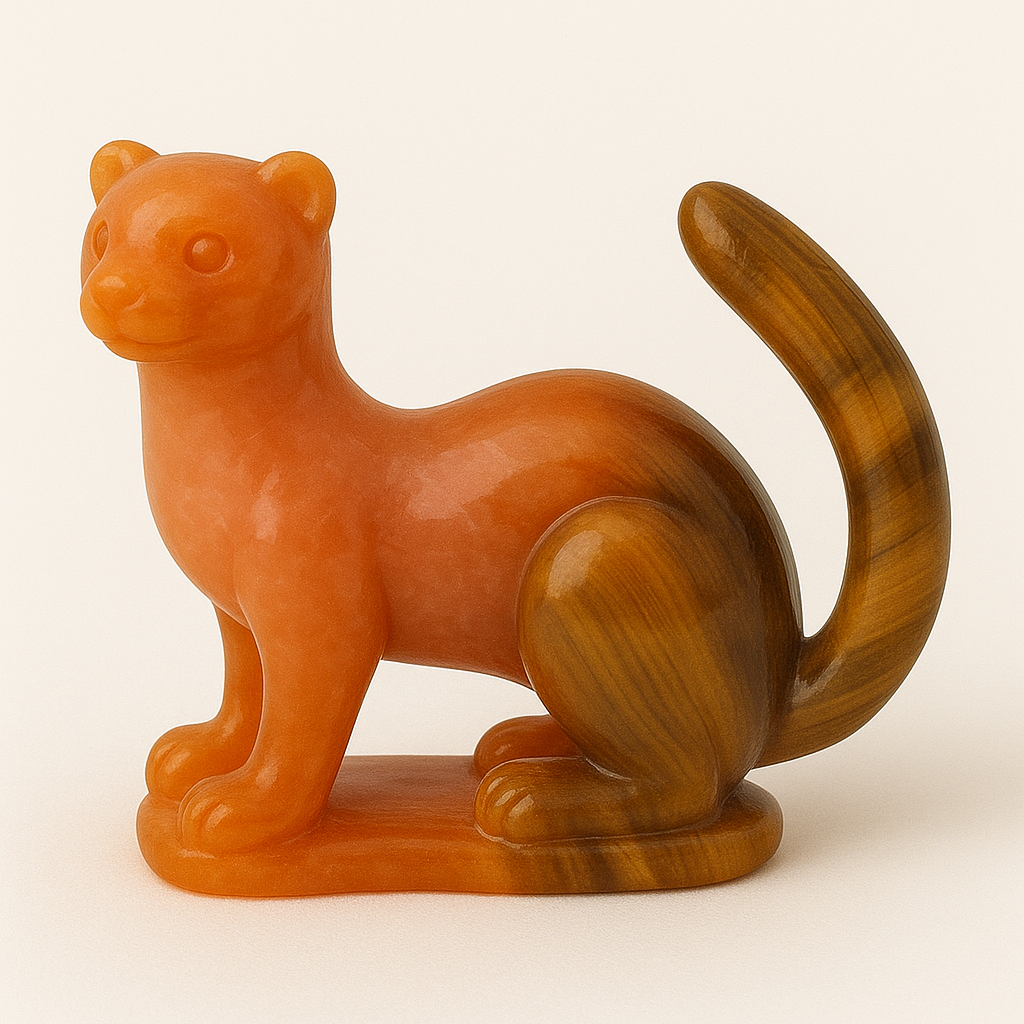
The Symbolism of Ferrets
Share
Curious, nimble, and tireless in exploration, the ferret moves through crevices, tunnels, and shadows with a playful energy that belies its sharp intelligence. Its slender form weaves in and out of the unseen, uncovering what is hidden with ease and joy. The ferret is an emblem of investigative spirit, joyful persistence, and the gift of uncovering deeper layers of reality through motion and instinct.
To contemplate the ferret is to encounter the archetype of the seeker who investigates with delight, of the one who finds by feeling, and of the mind that dances rather than demands.
The Inquisitive Seeker in Cultural Memory
In European folklore, ferrets and their wild relatives were seen as guardians of the homestead, natural hunters of vermin and disruptors of stagnation. Yet beyond their practicality, they were viewed as creatures of subtle cunning and sacred restlessness—able to enter places no others could reach, and often associated with mischievous wisdom.
In some Celtic and Norse traditions, animals like the ferret were considered messengers of hidden truths, guiding the soul into places overlooked by the obvious eye. Not brutish like larger predators, the ferret was recognized for its intelligent, flexible power, a totem of those who move quietly and leave no stone unturned.
Though often playful, the ferret was not taken lightly—it was known that it could transform a space, either by exposing what was forgotten or by shifting energy through sheer, unrelenting curiosity.
Tunnels, Tension, and the Joy of Discovery
The ferret’s domain is not the open plain—it is the hidden corridor, the space between spaces. Its gift is not conquest, but revelation—finding the forgotten object, the hidden passage, the path that bends inward before it opens out.
Its behavior is dynamic: darting, ducking, emerging. This movement is not frantic—it is intuitive intelligence in motion, revealing how play and precision can co-exist.
It teaches that not all truth is found by staring at it—some must be uncovered by circling it, feeling into it, and approaching it from unexpected angles. The ferret’s joy is not merely in the goal, but in the dance of getting there.
This energy reflects the soul's longing to understand without over-defining, to move through life not with control, but with engaged discovery.
Resonance with the Energy Centers
The ferret resonates primarily with the orange-ray energy center—the sacral chakra, which governs emotional navigation, curiosity, intimacy, and the flow of desire toward deeper connection.
Its investigative nature, love of hidden spaces, and fluid movement all reflect the orange-ray’s qualities of exploration, responsiveness, and the pursuit of contrast and contact. The ferret is emotionally attuned, expressive, and capable of discovering truth by how it moves—not through dominance, but through curiosity.
There is also a secondary resonance with the yellow-ray energy center—the solar plexus chakra, which governs self-direction, will, and interaction with the environment as a distinct being.
The ferret may be small, but it holds a clear sense of identity. It navigates spaces confidently, follows its own inner command, and chooses its path without needing validation. Its yellow-ray aspect is not aggressive—it is focused individuality, the self engaged with the world while remaining whole within.
Together, orange and yellow weave through the ferret as:
curiosity guided by will,
play grounded in selfhood,
and motion that unearths hidden truth.
The One Who Finds What Others Miss
To walk with the ferret is to embrace movement as revelation, to let joy lead inquiry, and to understand that some doors only open when approached sideways. The ferret teaches the seeker to look again, to go deeper, and to trust that curiosity is a sacred compass.
The ferret does not demand answers.
It explores.
It does not conquer space.
It reveals it.
It teaches:
Follow the path that winds.
Let delight be the lantern.
And find what others overlook—not through force, but through flow.